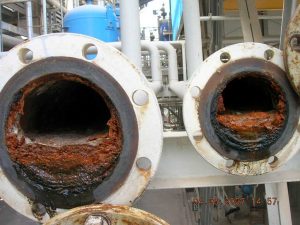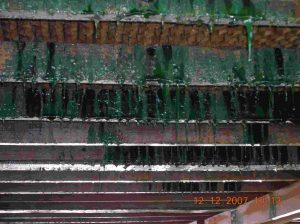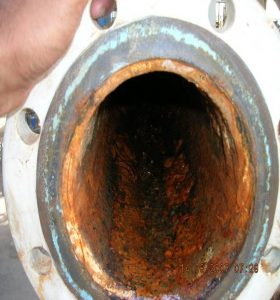
The refinery ISO OCTANE in Dubai, UAE is a rather small refinery. This refinery is not operating constantly, but is used only batch-wise. Due to this mode of operation, also the cooling loop is not running in full capacity all the time. If there is no production, the cooling loop is operated with limited water circulation.
Heavy fouling caused by organic material was found during inspection of the cooling water system. This is called biofilm caused by biofouling. This fouling could be found in the entire system, this means all pipes, valves, cooling towers and heat exchangers.
A typical origin of biofilm are dead ends or dead legs in the system. These are the critical parts in each water system. Once there is a biofilm established in a dead end the biomass will wander through the whole system. The problem of such biofi
Adding chemicals or working with heat is a possibility to solve the problem. But only in the parts of a water system, where water is always flowing. In a dead leg adding chemicals or using UV-light is not solving the problem at all. The stagnating water is an ideal habitat of these bacteria and the chemicals can’t reach those areas as the water doesn’t cycle there.
Biofouling
In the return line of the cooling loop, so called biocide was added in the water to stop the growth of algae. Nevertheless heavy growing of algae was found at the cooling tower. These algae were distributed by the water through the entire system. The biofouling or biofilm is forming a slimy film at the inner surfaces of the pipes. This film is reducing the heat transfer significantly and so the cooling was not sufficient anymore.
Biofilm removed by Merus Ring
As handling issues with bacteria is always a difficult and individual case we did some research on site. Our technician decided to install several Merus Rings at 
Two months later the spots we previously checked were opened again to see the results. It was clearly visible, that the existing fouling had vanished. The inner surfaces of the pipes started to get clean. Even old corrosion could be removed gradually. The rust is taken downstream and will settle in the sump of the cooling tower.
It can not be said how long it takes until all the corrosion is gone because this depends on many factors. The corrosion rate has been in average 8.5 mpy before the Merus installation and could be lowered to less than 1.5 mpy in two months.
